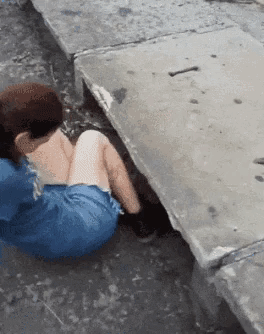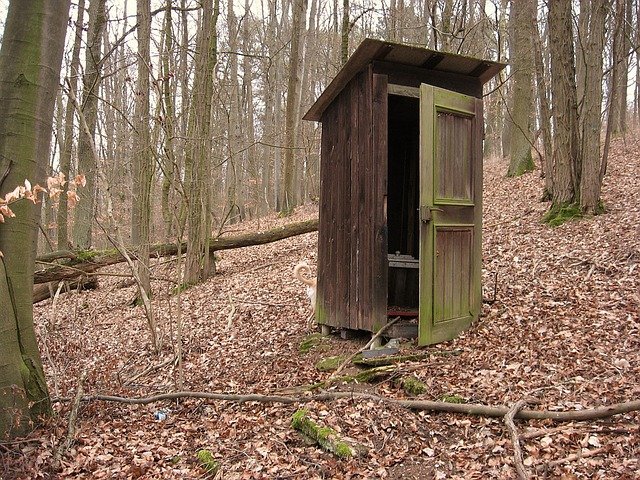Cesspools and Septic and Sewers OH MY!
A few days ago, while driving to meet a client, I noticed water barreling out of a manhole cover. Soon after, I heard that Portland area residents were issued a warning to avoid the Willamette River due to sewage overflow. Then yesterday I showed clients a property in Milwaukie that is actually on a cesspool. I've sold properties with septic tanks before, but that was a first.
“Why was Piglet staring into the toilet?
He was looking for Pooh.”
I think this definitely calls for a blog about sewer lines. This isn't typically a fun subject, but let's take the plunge anyway. I promise it won't be a waste of time.
But, you might want to grab a stool, this could take a while. Ooh, I'm so punny!
I THOUGHT I DO MY BUSINESS AND THEN MAGIC (AND PAYING MY SEWER BILL) MAKES IT GO AWAY. IS THERE MORE I SHOULD KNOW?
You don't have to be a plumber to get a handle on the 3 common types of sewage systems.
Public sewer
Septic
Cesspool
Let's get down and dirty with what you need to know as a homeowner or prospective home buyer/seller.
PUBLIC SEWER
Most (but far from all) properties in the Portland metro area are on public sewer systems. Generally speaking, these are maintained by the local public works department. In the city of Portland, Environmental Services is the sewer and stormwater utility.
“Why did the superhero flush the toilet?
Because it was his doody.”
What may lurk beneath...
It's a common misconception that the city maintains the whole sewer line. Depending on how your home is situated, size of the property, how the sewer line runs, and your local municipality, you could be responsible for a few feet of sewer line up to 100'+ (sometimes even out into the street).
If a problem happens with the sewer line on your property, then you are responsible for fixing it. Because of this, having a sewer scope performed during the inspection period is very common when purchasing a home.
If you purchased a home without having a sewer scope performed, then it's a good idea to have one done now. The scope isn't very expensive and if there's a problem, it's best to get it fixed before it becomes a BIGGER problem!
“The Police station toilets were stolen. Investigators have nothing to go on.
Common issues you might encounter with your sewer line are: root intrusion, cracking, smaller "bellies" (when the line dips, causing water and waste to stand in the line), all the way to large pools in the line and complete line breaks.
Even if you are purchasing new construction, a sewer scope is a good idea. Just because it's new, doesn't mean it was installed correctly!
On one new construction home I sold, they failed to "de-burr" the line. When you cut into PVC pipe, it leaves bits of plastic material around the cut end. These "burrs" need to removed before installing the sewer line. If not, bits of paper or other material can get caught by them and end up blocking the line.
On another new construction home, settling occurred after construction that resulted in a belly. Lines could be cracked by trucks driving over them, contractors may forget to glue joints, install with the angle going the wrong way (ick!) or even reuse old existing lines to save money.
Definitely make sure to have a sewer scope done!
“What did Mr. Spock find in the toilet?
The Captain’s log.”
On older homes, part of the sewer line may be made out of clay or concrete. These are particularly susceptible to root intrusion and cracking.
You might think that you can get away without a sewer scope if the seller tells you that they recently re-did the sewer line. This happened on an early 1900s home I sold. We did the sewer scope anyway and found that they replaced most of the line, except the last 15 feet or so at the house. This part of the line was mostly still original clay and had root intrusion. Fortunately, the quote to fix it was incredibly low for sewer line repair because the line was so close to the surface, only about $1000.
Usually, sewer line repairs can run anywhere from several thousand to well over $10,000.
SEPTIC SYSTEMS
Ancient septic.
I'm going to quote the EPA rather than re-defining this myself:
"Septic systems are underground wastewater treatment structures, commonly used in rural areas without centralized sewer systems. They use a combination of nature and proven technology to treat wastewater from household plumbing produced by bathrooms, kitchen drains, and laundry.
A typical septic system consists of a septic tank and a drainfield, or soil absorption field.
The septic tank digests organic matter and separates floatable matter (e.g., oils and grease) and solids from the wastewater. Soil-based systems discharge the liquid (known as effluent) from the septic tank into a series of perforated pipes buried in a leach field, leaching chambers, or other special units designed to slowly release the effluent into the soil or surface water."
The Portland metro area is fairly compact, so you don't have to drive very far to encounter properties that are on septic systems. New septic systems are installed on a regular basis in the tri-county area. If you are considering installing a new septic system, your local municipality should have specific guidelines for the application and inspection process. You will definitely need to have a perc test done (percolation test, which determines the water absorption rate of the soil).
“I hate puns about toilet paper. They’re tearable.”
If you are purchasing land, make sure to have the perc test done as part of your due diligence during during the inspection period. I have seen parcels where a perc test reveals that installing a septic system isn't possible!
When considering the purchase of a property on a septic system, you absolutely should have a septic tank inspection done. If you own a property with a septic system, it's a good idea to have it inspected and/or pumped every 3-5 years or so (depending on the size of your family/home/septic system).
An inspection will look at many different factors, including: condition of clean-out, meets DEQ code, condition of tank, draining properly, flow of sewage, distribution box, condition of drain field, pipes, and more.
“A house without a toilet? Seems uncanny.”
If you are using a Realtor to purchase a property with a septic system, they will likely use a standard "SEPTIC/ONSITE SEWAGE SYSTEM ADDENDUM" with the offer package. On this form, the party responsible for the Inspection and Pumping/Cleaning is clearly marked (usually the buyer pays for the inspection and the seller pays for the pumping). There is other language in the form regarding the information the seller needs to provide about the septic system. Discuss this form with your Realtor.
Homes on septic systems are very common and it shouldn't deter you from purchasing a home if the system is in good condition. Just make sure to maintain it!
CESSPOOLS
A cesspool is a pit lined with cement, stone, or masonry that sometimes has an outlet pipe connected to another pit. Solids settle to the bottom of the pit while liquids are absorbed into the surrounding soil, often through the sides of the cesspool.
Light waste such as soap and grease will float to the surface of the cesspool contents and forms what is called a "scum". Natural bacteria degrades the scum over time while the heavy waste sinks and forms sludge. Between the scum and sludge is greywater. All of this is true for septic tanks, too.
The difference is that with a septic tank, this greywater flows out of the tank into the leach field. With a cesspool, it filters through the walls.
“A good relief map shows where the restrooms are.
The best way to inspect a cesspool is through a sewer scope. That will uncover the condition of the sewer lines to it, where the cesspool is located, and how full the cesspool is.
Cesspools aren't as common as septic tanks due to environmental concerns. Old, abandoned cesspools can gradually or suddenly sink, and people have been known to fall into them. Another highly recommended and common inspection when purchasing a home is to have a scan done to uncover abandoned oil tanks. Sometimes these scans will also review an abandoned cesspool. If you discover one, it should be decommissioned.
While there's nothing inherently wrong with purchasing a home with a working cesspool, at some point the sewer line or the cesspool itself will start to fail. At that point it is best to connect to public sewer if possible, or install a septic system. (Some municipalities may require you to connect to public sewer.)
Be prepared for the cost of decommissioning the cesspool and changing out the system. Contact a local environmental services company for information about decommissioning the cesspool and/or installing a new septic tank. Contact the local municipality for information regarding local rules and connecting to public sewer. You can also contact me for referrals to good contractors that can help.





